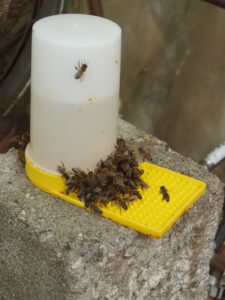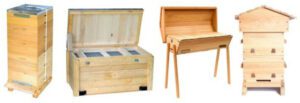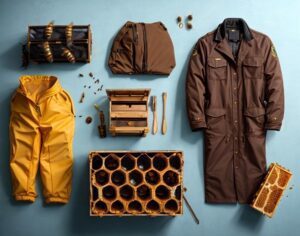When it comes to handling honey bees, protective gear is essential, and beekeeping gloves play a crucial role in keeping beekeepers safe from stings. Selecting the best gloves can enhance comfort, dexterity, and overall safety during hive inspections and honey harvesting. Explore our guide to discover key considerations for choosing the perfect pair of beekeeping gloves for your honey bee supplies.
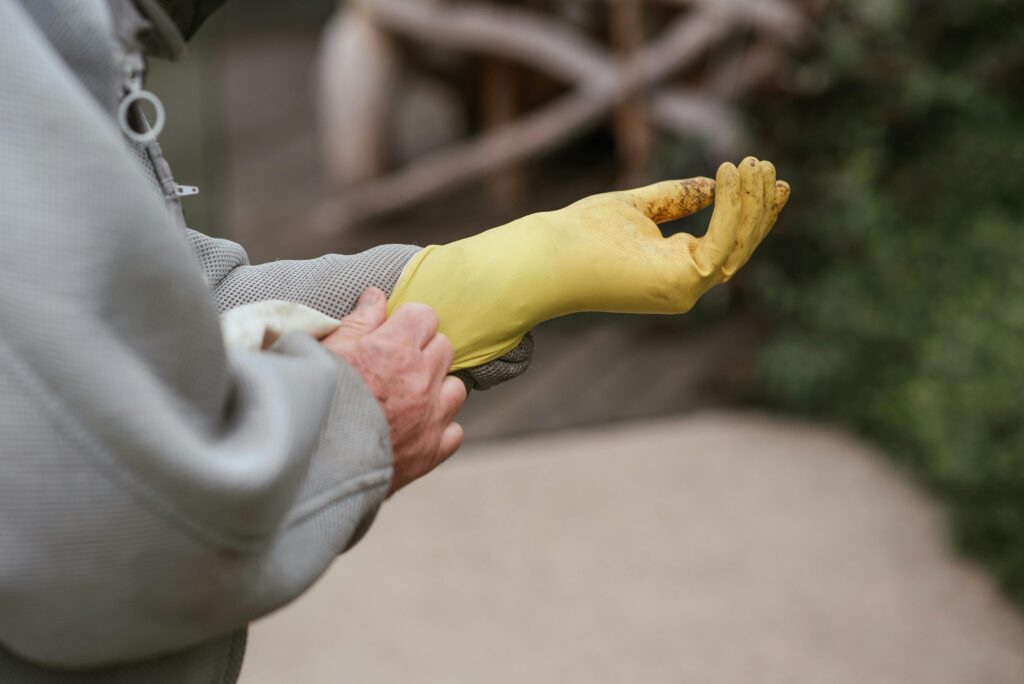
Table of Contents
Look for other 10 Essential Honey Bee Supplies Every Beekeeper Needs here.
1. Material Selection
When choosing beekeeping gloves, material selection is a critical factor that influences both protection and comfort. Common materials used for beekeeping gloves include leather, nitrile, and synthetic blends. Leather gloves are durable and protect against a sting, making them a popular choice for many beekeepers.
However, they can be less flexible and may require some break-in time. Nitrile gloves offer a high level of skill and are often preferred for tasks that require more precise movements, such as handling queen bees or delicate hive inspections. They also provide a good barrier against being stung while being lightweight, breathable, disposable gloves.
Synthetic blends aim to combine the best features of both leather and nitrile, offering a balance of protection, flexibility, and comfort. When selecting your gloves, consider the specific tasks you’ll be performing and choose a material that best meets your needs to protect your hands, durability, and ease of use.
Leather Gloves
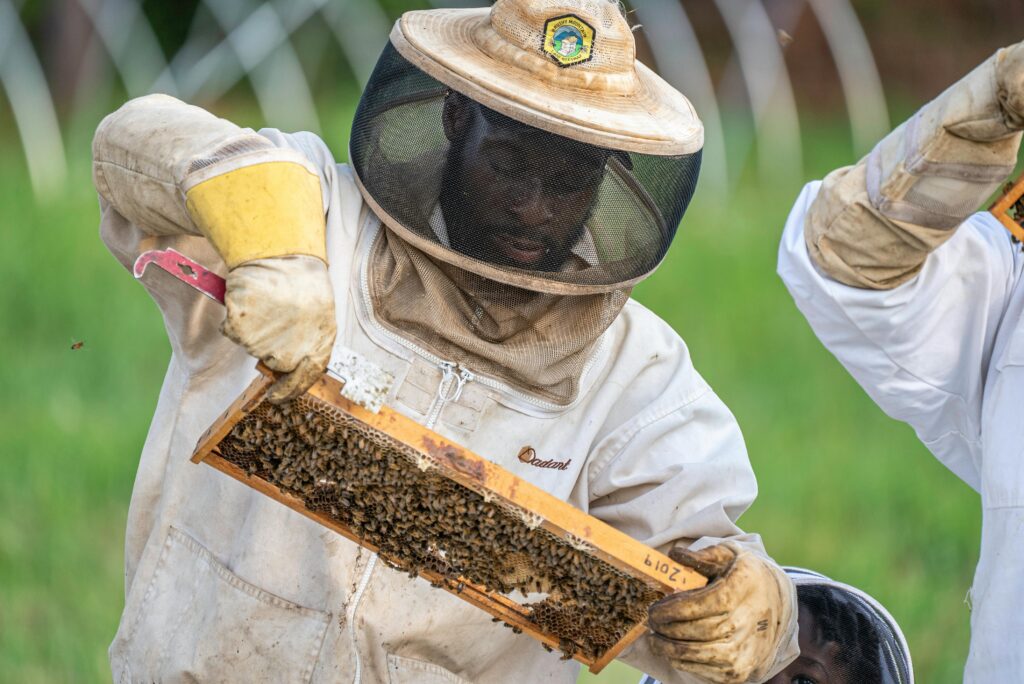
Durability: Thicker leather gloves are highly durable and protect you against injury.
Safety: Thick leather gloves offer a barrier that prevents stings from penetrating, ensuring safety during inspections.
Comfort: Despite their thickness, they can be comfortable when properly fitted.
Goat Leather: One of the more popular options.
Nitrile
Flexibility: Nitrile gloves offer flexibility, allowing you to handle delicate tasks with ease.
Sting Resistance: They are highly resistant to stings, providing reliably protect you during inspections.
Comfort: Disposable nitrile gloves are comfortable and often preferred for their balance of safety and ability.
Disposable: Nitrile Gloves can be thrown out after each use or used for a bit longer.

Canvas
Lightweight: Canvas gloves are lightweight, making them suitable for warm weather conditions.
Breathability: They allow airflow to keep hands cool during inspections.
Basic Protection: While offering basic protection against wounds, they prioritize breathability and comfort.
2. Size and Fit
Ensuring the proper size and fit is essential for both safety and comfort if your honey bees release their alarm pheromone. A well-fitting beekeeping glove allows for better skill and control, enabling you to perform inspections and maintenance tasks with precision.
Ill-fitting beekeeping gloves can lead to discomfort, reduced sensitivity, and even increased risk of injury if gaps or loose areas allow bees to enter. It’s important to choose a size that provides a snug but comfortable fit, allowing for full range of motion without being too tight.
Consider trying on different sizes or consulting sizing charts from manufacturers to find the perfect gloves fit that ensures maximum defense and ease of movement. Measure your hand and compare it to the chart.
Snug Fit
Dexterity: Thinner gloves ensure optimal ability to handle a hive tool and performing detailed tasks inside the hives.
Comfort: Provides comfort without excess material that could hinder movements.
Good Grip: Helps maintain a good grasp on frames and tools.
Elastic bands: Ensures bees can not get inside.
Length
Wrist Protection: Ensures the wrists are covered to prevent bees from stinging.
Coverage: Full coverage of hands and wrists ensures comprehensive safety.
Adjustability: A glove may offer adjustable cuffs for a secure fit around the wrists.
Sleeves: Longer sleeves offer additional defense for your arm.
Adjustability
Custom Fit: Adjustable closures provide a customized fit for different hand sizes.
Security: Prevents slipping or becoming loose during inspections.
Ease of Use: Allows for quick adjustments to fit for comfort and functionality.
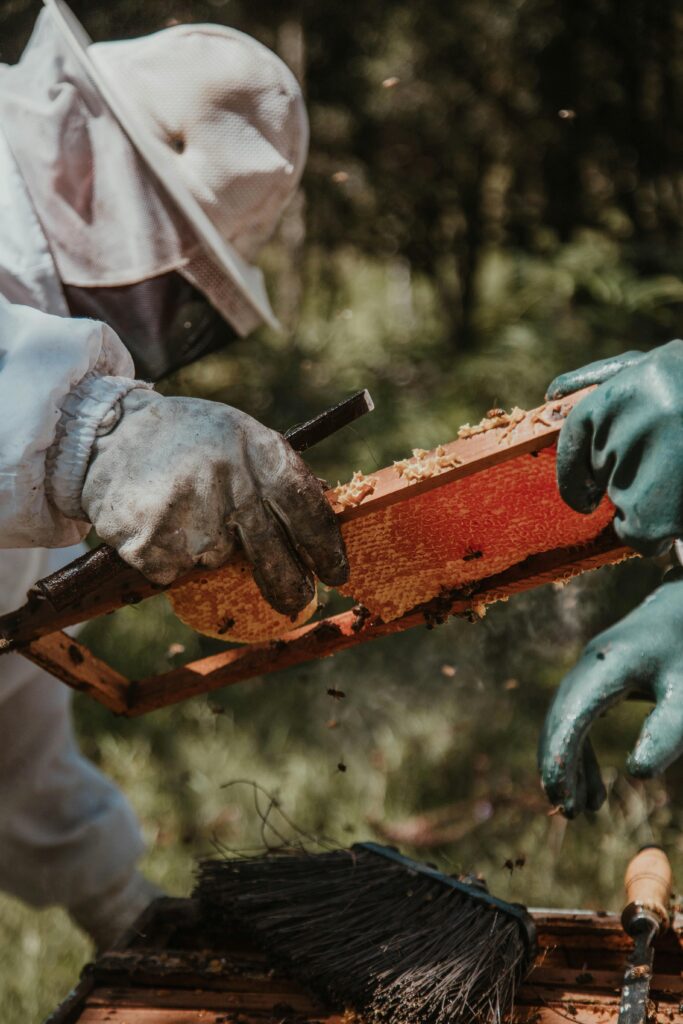
3. Protection Level
The level of safety offered by your beekeeping gloves is paramount to ensuring a safe and productive beekeeping experience. Well crafted protective wear should provide a reliable barrier against stings, allowing you to handle bees and perform beehive tasks with confidence.
Look for a pair of gloves that is known to be tough and resistant to wounds, such as thick leather or multi-layered fabrics. Additional features like extra fabric, reinforced stitching, long cuffs, and secure closures can enhance the overall protective capabilities, preventing a bee from finding their way inside.
By choosing gear that prioritizes safety, you can focus on your beekeeping activities without the constant worry of getting stung, leading to a more enjoyable and efficient management of your apiary.
Sting Resistance
Material Thickness: Thick material effectively protects against injury.
Layering: Multiple layers or a reinforced palm provides enhanced sting resistance.
Durability: A glove that withstands frequent use.
Puncture Resistance
Construction: Strong, durable materials prevent wounds from penetrating the glove.
Reinforced Areas: Reinforced fingertips offer superior puncture resistance.
Longevity: Puncture-resistant gloves are built to last under rigorous apiary conditions.
Coverage
Comprehensive Protection: Full-hand and wrist coverage protects against stings and abrasions.
Security: Ensures all vulnerable areas are shielded during beehive management tasks.
Comfort: Balanced coverage without compromising mobility or comfort.
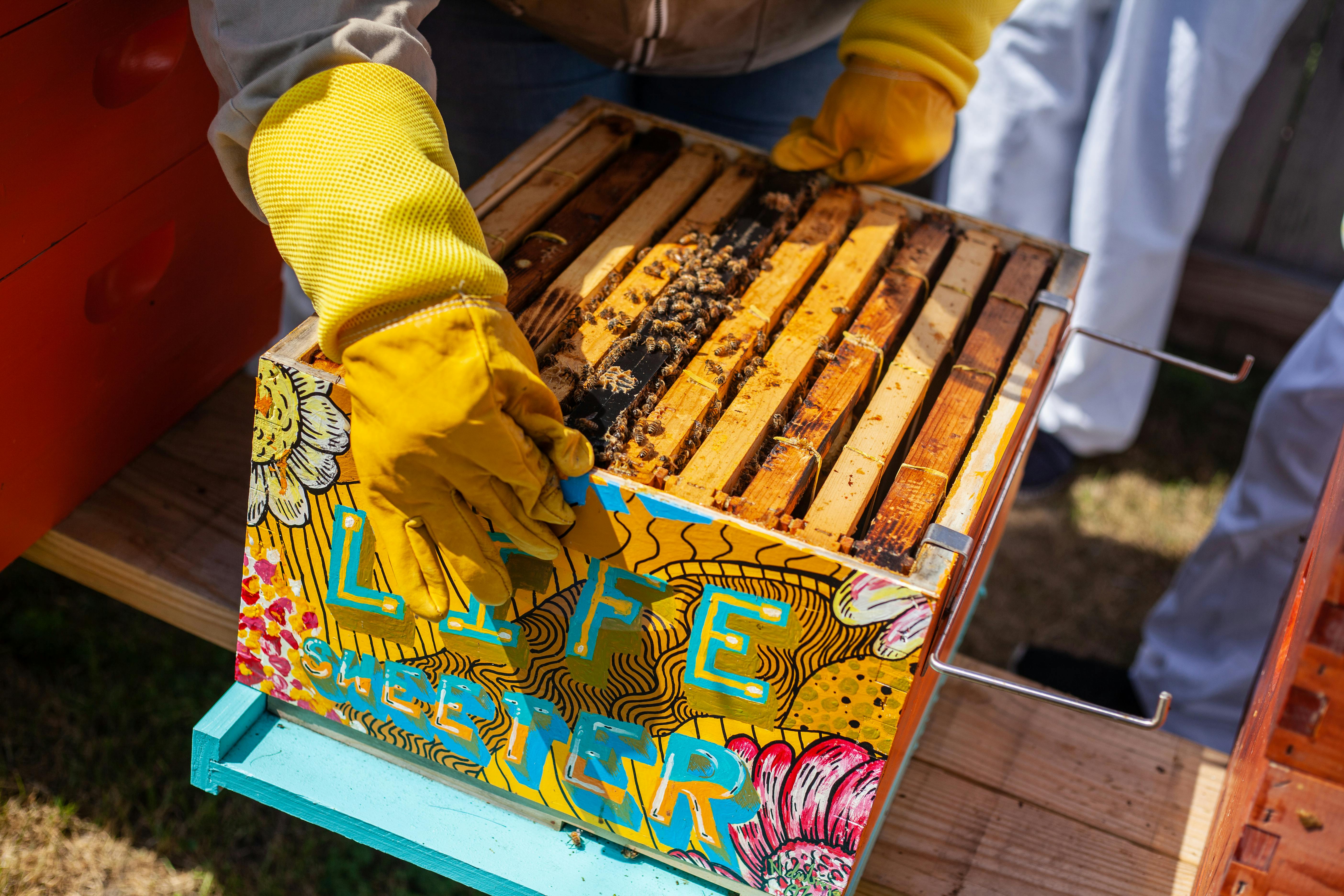
4. Dexterity
Maintaining agility is crucial when handling bees and performing intricate tasks within the beehive. Beekeeping gloves that offer good flexibility and tactile sensitivity allows you to manage delicate operations, such as pulling out and inspecting brood frames, handling the queen, or collecting honey, with precision and care.
Materials that provide a close yet comfortable fit enable fine motor control, reducing the risk of accidents or unintentional harm to a bee. Features such as thin, pliable fabrics, disposable gloves or specially designed fingertips can enhance your ability to perform detailed work while still offering adequate safety.
Ensuring that your protective wear allows for sufficient dexterity will make your experience smoother and more effective, allowing you to work confidently and efficiently.
Flexibility
Freedom of Movement: Flexible beekeeping gloves allow for precise handling of delicate frames.
Task Efficiency: Enables performance of detailed tasks with accuracy.
Comfort: Lightweight and flexible gloves reduce hand fatigue during prolonged use.
Thin Material
Tactile Sensitivity: Thin gloves provide enhanced sensitivity for handling small hive tools and components.
Precision: Allows for precise movements and adjustments inside the beehive.
Breathability: Thin materials often offer better airflow, improving comfort in warm weather.
5. Ventilation
Ventilated gloves are essential for maintaining comfort during long hours in the apiary. Working with bees, especially in warmer weather, can lead to excessive heat and perspiration, making breathable gear crucial for staying cool and dry.
Ventilated materials, such as mesh panels or lightweight fabrics, allow for airflow, reducing heat buildup and preventing discomfort. Additionally, well-ventilated protective wear can help prevent sweat from impairing your grasp or causing irritation, ensuring that you remain focused and effective in your tasks.
Prioritizing gear with good ventilation will enhance your overall beekeeping experience, making it more enjoyable and less physically taxing.
Breathable
Airflow: Allows hands to remain cool and comfortable during inspections.
Moisture Control: Reduces sweat buildup.
Comfort: Enhances overall comfort, especially in hot weather conditions.
Mesh Panels
Air Circulation: Mesh panels offer superior ventilation.
Coolness: Keeps hands cool and dry during prolonged inspections.
Defense: Maintains injury resistance while improving airflow.
6. Durability
Durability is a key factor in wearing gear, as it ensures long-lasting security and reliability. Beekeeping involves frequent handling of components, exposure to the elements, and contact with bees, all of which can wear down protective gear over time.
Durable materials such as thick leather, reinforced fabric, and strong stitching can withstand these demands, providing consistent defense season after season. Well crafted, durable attire reduces the need for frequent replacements, offering a cost-effective solution for you.
Shop for robust, well-constructed gear ensures that you are always well-protected and can focus on maintaining healthy, productive beehives.
Quality Stitching
Longevity: Strong stitching ensures they withstand frequent use.
Reliability: Reinforced seams prevent tearing and enhance lifespan.
Protection: Secures glove integrity for prolonged safety and comfort.
Reinforced Areas
Protection: Extra layers in critical zones offer enhanced sturdiness and security.
Sturdiness: Reinforced palms and fingertips withstand abrasion.
Safety: Ensures hands are shielded from potential bee stings and tools.
7. Grip and Tactility
Having excellent grip and tactility in your attire is essential for performing precise tasks efficiently and safely. Whether you are manipulating small beehive components, handling bees, or managing plastic frames, the ability to feel and control your movements accurately is crucial.
High-quality materials and textured surfaces can enhance your grip, reducing the risk of sweaty hands causing accidental drops. This improved control not only ensures the safety of the bees but also enhances your efficiency in performing detailed work. Choosing protective gear that offers superior grasp and tactile sensitivity will greatly benefit your overall beekeeping experience, allowing you to work with confidence and precision.
Textured Palm
Secure Hold: Textured surfaces provide a firm hold on components and tools.
Control: Prevents slipping during delicate maneuvers inside the beehive.
Agility: Enhances handling precision without compromising safety.
Non-slip Material
Stability: Non-slip offers stability when handling slippery equipment.
Traction: Reduces sliding on wet or slick surfaces inside the hives.
Safety: Minimizes accidental drops or slips during beehive inspections.
8. Ease of Cleaning
Ease of cleaning is an important consideration for any equipment, as regular maintenance ensures hygiene and longevity. Beekeeping tasks can often lead to gear becoming soiled with honey, wax, propolis, and dirt, making it essential that your protective gear is easy to clean.
Materials that can withstand frequent cleaning without degrading or losing their protective qualities are ideal. Additionally, easy-to-clean gear saves time and effort, allowing a beekeeper to focus more on managing your beehives and less on upkeep. Choosing equipment that can be quickly and effectively cleaned will help maintain its condition and functionality, ensuring you are always prepared for your beekeeping activities.
Washable
Maintenance: Easily cleaned with mild soap and water after inspections.
Hygiene: Regular washing removes debris and maintains glove cleanliness.
Longevity: Cleaning prolongs glove lifespan and ensures continued effectiveness.
Water-resistant
Quick Drying: Repels moisture for fast drying after cleaning.
Comfort: Prevents discomfort from moisture during an inspection.
Versatility: Suitable for varying weather conditions and environmental exposure.
9. Budget Considerations
When selecting equipment, budget considerations are important for both new and experienced beekeepers alike. Investing in high-quality, durable gear is essential for safety and effectiveness in managing your apiary. While premium materials and features may come at a higher initial cost, they often offer better security, longevity, and overall value in the long run.
Assessing your needs and prioritizing essential features can help you make informed decisions that align with your budget without compromising on quality.
Additionally, exploring different brands and comparing prices can help you find cost-effective options that meet your requirements for equipment. By balancing quality and affordability, you can ensure that your investment in gear supports your success and enjoyment in your endeavors.
Value for Money
Investment: Consider long-term benefits over initial cost.
Quality: High-quality may offer better value and resilience.
Effectiveness: Prioritize security and comfort within budget constraints.
Long-term Investment
Quality Assurance: Invest in durability and performance.
Cost-effectiveness: Higher-quality may reduce replacement frequency.
Sustainability: Ensures ongoing safety and comfort during apiary management.
10. Reviews and Recommendations
User Feedback
Insights: Reviews offer firsthand experiences and recommendations.
Comfort: Gauge overall satisfaction and comfort from user testimonials.
Performance: Evaluate toughness and security based on user reviews.
Expert Opinions
Guidance: Seek advice from experienced professionals or associations.
Recommendations: Expert opinions validate glove performance and suitability.
Reliability: Trust professional insights for informed decision-making.
Other Resources for Choosing Beekeeping Gloves

For additional information on essential beekeeping equipment and practices, check out these articles:
Best Bee Gloves Conclusion
Choosing the best beekeeping gloves for your beekeeping suit is crucial for ensuring both safety and comfort as a beekeeper. The best beekeeping gloves offer security against stings without sacrificing agility, allowing beekeepers to handle hive inspections and maintenance tasks efficiently. Wearing the right fit with your jacket, your fingers, thumb and skin will be protected.
Key considerations when selecting normal gloves include the material, fit, and additional features such as ventilation and reinforced stitching. Gloves made from materials like leather or nitrile offer varying degrees of safety and flexibility, making it essential to find the balance that suits your specific needs and preferences.
In addition to material and fit, the design of the gloves plays a significant role in their effectiveness. Long cuffs, elastic closures, and breathable fabrics can enhance comfort and safety, making your beekeeping experience more enjoyable and productive.
By investing in high-quality beekeeping gloves, you can minimize the risk of stings and ensure a smoother interaction with your bees, ultimately leading to better apiary management and healthier colonies.

